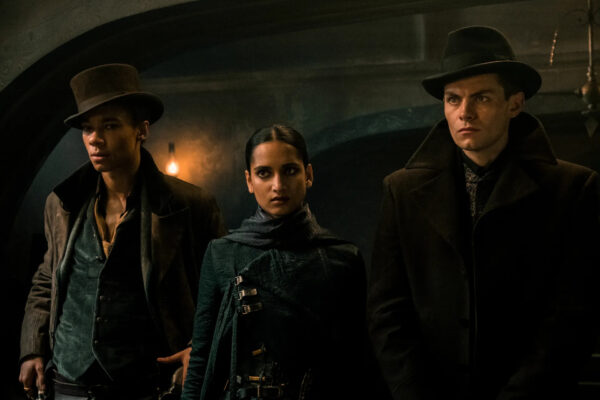Shadow and Bone, a popular Netflix series based on Leigh Bardugo’s famous novels, released on April 23, 2021. Shadow and Bone tailor already rollout. Let’s enjoy the Shadow and Bone Netflix series short clip below:
About Shadow and Bone Netflix Series in Details:
Author Leigh Bardugo had just one massive request when Arrival screenwriter Eric Heisserer arrived to accommodate her acclaimed YA series Shadow and Bone for Netflix: “I want you to do this better than I did.”
Shadow and Bone series mainly on the first publication in Bardugo’s first “Grishaverse” trilogy, Shadow and Bone follow youthful mapmaker Alina because she finds her rally sun effective in hammering literal, real darkness, which divides into the kingdom. With Shadow and Bone debut book, Bardugo desired to resign from the typical medieval England setting so widely found in fantasy books and picked Imperial Russia as inspiration because of her entire world, Ravka. However, while the atmosphere itself calms the typical traditions, she leaned on a narrow worldview to populate the saga.
“I was echoing a lot of the fantasies I’d grown up with, which were very white, very straight sort of traditional Chosen One stories,” Bardugo tells Polygon.
Individuals who kept up with all the Grisha books detected this development. While not one of the first publication characters was introduced as particular races, lots of the critical primary players in the subsequent books, particularly in the spinoff Crows duology and following sequel collection, were explicitly said to be nonwhite. Even a few characters whose races weren’t explained in the initial trilogy were defined in subsequent installments.
“As I wrote, as I gained more confidence, I started to write a world that looked a lot more like the world around me,” she says.
That conscious attempt to diversify the throw was a priority to its sequence. The two Heisserer and Bardugo believed the most ordinary change to the tv series was supposed to create Alina half-Asian. Following the casting call was set out, Heisserer explained on Twitter, he didn’t need to confine the casting to a particular ethnicity and “would rather find the appropriate gift who will notify the expression of Shu Han versus another way round. “From the novels, Ravka is at war with Shu Han over boundary disputes. By making Alina part Shu, Bardugo states, “her travel as an outsider [became] more upsetting.”
Jessie Mei Li, who performs Alina, states while Alina’s race is not the only significant thing about her, the legacy shaped her personality. It had been something, she informs us, she managed to pull from her life adventures of being biracial.
“[Alina] spent her entire life being told that she resembles the enemy. She has had to stand up for himself and develop that thick skin; however, she is also overly exposed,” Li says. “And she is suspicious of new people, and she is soft-spoken since she does not want everyone to feel that she is competitive. It was delightful to have the ability to bring a few of my experiences”.
For Heisserer, it was important to recruit a diverse set of authors to the job. The showrunner says author Christina Strain (Finding Ohana, The Magicians) was especially crucial in bettering the most critical character’s voice.
“She helped shape that part of Alina that didn’t detract from the story that we were adapting, but gave an authenticity, and allowed Christina to speak some of her truth and some of her personal experience,” he says.
Although Shadow and Bone adapt the first publication in the primary Grisha trilogy, everybody agrees that adapting it today, with the entire trilogy and spinoffs having fleshed out these identities figures, advantages the show in the long term. Inej and Jesper, two Six of Crows characters today incorporated into the initial trilogy, are equally characters of color. But incredibly talented and proud Grisha soldier Zoya, who is at odds with Alina for most of the first publication, wasn’t shown to be biracial until the first publication in the movie offers King of Scars.
Clearer origins add yet another layer to the intricate connection that the wolf stocks with Alina. Zoya, officially Grisha, pioneer General Kirigan’s preferred soldier, feels threatened by Alina’s power and standing. Her insults into Alina carry on a new border with their race’s right involved because Zoya is acutely conscious of what it means to seem like an outsider.
“Although she is very aware of her identity, and her race and where her parents come from, she also will use it as a dig or a means to hurt Alina because she knows as another mixed-race woman, these things hurt,” says Sujaya Dasgupta, who plays Zoya. “She’s been probably told all these digs and horrible things.”
Weaving in these figures and knowingly altering Alina’s race instantly bolsters the diversity at the first narrative. The Grishaverse might have started in a conventional, white-centric manner, but the series, which places a young biracial woman in the middle of an epic dream, mirrors at which Bardugo’s composing has gone at the decades since the initial publication surfaced.
















Be First to Comment